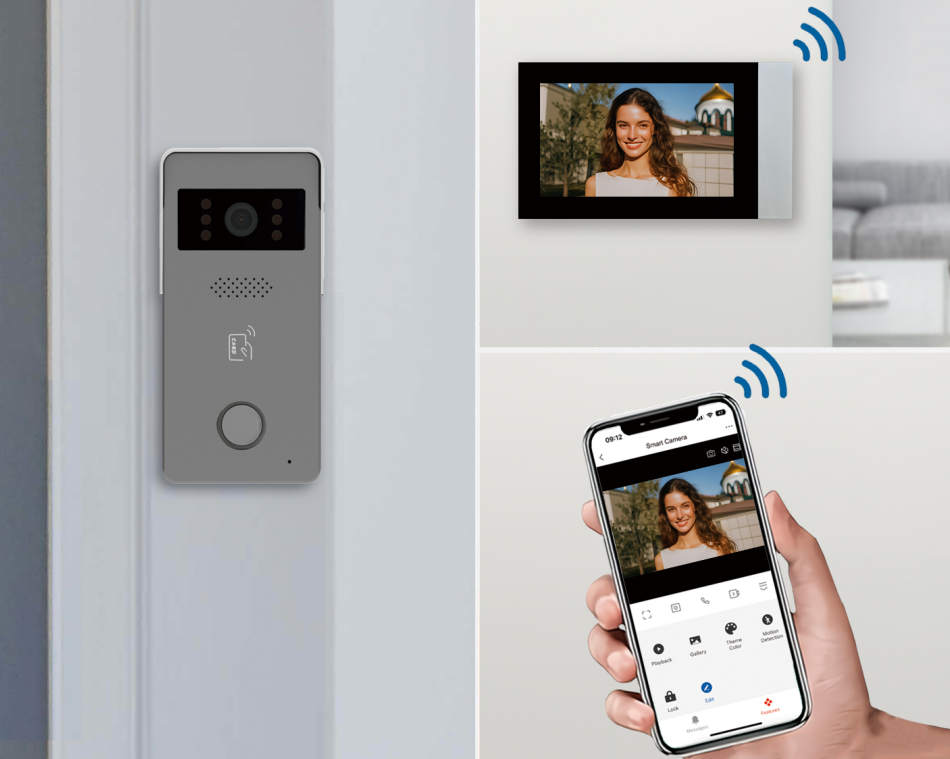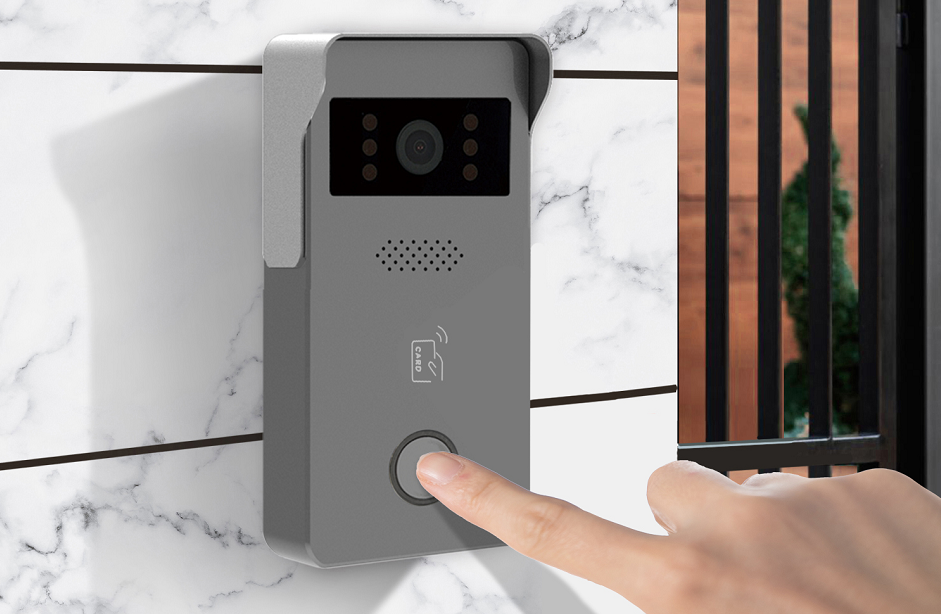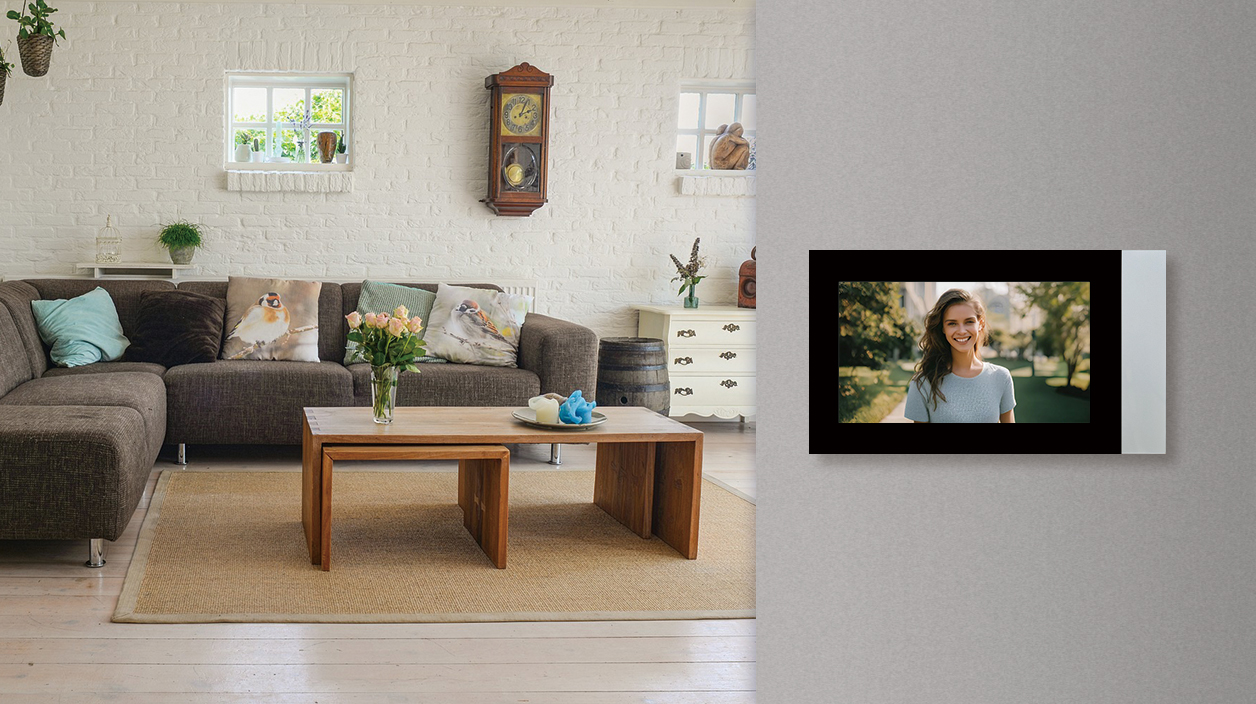Breaking Boundaries: A Look into the 2-Wire IP Video Intercom Systems
2024-04-01
In the realm of home security and communication technology, video intercom systems have become indispensable assets, offering convenience, safety, and peace of mind. Among the array of options available, 2-wire IP video intercom systems stand out for their functionality, efficiency and simplicity. In this article, we delve into the mechanics behind these systems, exploring how they work and their advantages in modern residential and commercial settings.

2-wire IP video intercom systems typically consist of the following components:
- Outdoor Station: This is the external unit that includes a camera, a call button, and most time a door release module (like the Trudian TD-D2ICR36W). Depending on the system, there can be additional modules like keypad, card reader, and screen.
- Indoor Monitor: The internal unit with a screen that allows residents to see visitors, communicate with them, and grant entry (if door release module is added to the outdoor station). As video intercom technology progresses, it can be also replaced by a phone App, providing enhanced convenience and cost savings.
- Master Station: It's not essential for every setting, primarily suited for large building structures. Functioning akin to an indoor monitor, it's usually situated in the building's security or janitorial room, serving as the central control unit or main interface for communication within the system, can talk to both units of the system.
How does 2-wire IP video intercom systems work?
It operates on a simple principle where two wires are used for both power and data transmission. When a visitor presses the call button on the outdoor station, the digital signal is transmitted over the two wires to the indoor monitor. The resident can then see and communicate with the visitor. If door release features are present, the resident can also remotely unlock the door. This system is often appreciated for its simplicity in installation, especially when upgrading from an older analog system to a more modern IP-based system .
Many modern 2-wire IP video intercom systems are designed to be compatible with existing smart home technologies and security systems. This allows homeowners to integrate their intercom system seamlessly with other devices, such as smart locks, surveillance cameras, and home automation systems, enhancing overall security and convenience.

IP video intercom or analog video intercom?
IP (Internet Protocol) video intercom and analog video intercom systems are both used for communication and security purposes, particularly in buildings and residential complexes. However, there are significant differences between the two in terms of technology, features, and capabilities:
- Technology:
Analog Video Intercom: Analog systems transmit video and audio signals over traditional analog cables. These cables connect the outdoor and indoor units of the intercom system.
IP Video Intercom: IP systems transmit data over an Ethernet network using the Internet Protocol. They rely on network infrastructure for communication between the outdoor and indoor units, often utilizing existing LAN (Local Area Network) or WAN (Wide Area Network) connections.
- Image Quality:
Analog Video Intercom: Analog systems generally offer lower image quality compared to IP systems. The video resolution and clarity are limited by the analog signal transmission.
IP Video Intercom: IP systems provide higher resolution and better image quality due to digital transmission. They can support HD (High Definition) or even 4K resolution, offering clearer images for identification purposes.
- Scalability:
Analog Video Intercom: Analog systems are often limited in scalability due to the constraints of analog cabling and signal degradation over longer distances. Adding more units may require additional wiring and infrastructure.
IP Video Intercom: IP systems are highly scalable. They can easily integrate with existing network infrastructure and support a large number of units without significant wiring changes. New units can be added to the network with minimal hassle.
- Integration and Features:
Analog Video Intercom: Analog systems typically offer basic intercom functionality with video and audio communication between the outdoor and indoor units. Integration with other systems such as access control or home automation may be limited.
IP Video Intercom: IP systems offer advanced integration capabilities with other security and communication systems. They can easily integrate with access control systems, CCTV cameras, and home automation platforms. Additional features such as remote access via mobile devices, video recording, and analytics are also common in IP video intercom systems.
- Maintenance and Management:
Analog Video Intercom: Maintenance of analog systems may involve troubleshooting physical wiring and connections. Any issues with the cabling or components require on-site inspection and repair.
IP Video Intercom: IP systems can be managed and monitored remotely using network management tools. Software updates, configuration changes, and troubleshooting can often be done remotely, reducing maintenance costs and downtime.
In summary, while both analog and IP video intercom systems serve the same basic purpose of enabling communication and security, IP systems offer superior image quality, scalability, integration capabilities, and remote management features compared to analog systems. However, they may also come at a higher initial cost due to the need for network infrastructure and specialized equipment.

2-wire video intercom or 4-wire video intercom?
With advancements in technology, two primary options have emerged: the traditional 4-wire video intercom and the increasingly popular 2-wire video intercom. While both serve the fundamental purpose of enhancing security and communication, the 2-wire system offers distinct advantages that make it not only a better choice but also a rising star in the realm of home security solutions. The primary difference between 4-wire and 2-wire video intercom systems lies in the wiring configuration and complexity of installation.
- Wiring Configuration:
4-Wire: In a 4-wire video intercom system, separate cables are used for power supply, audio transmission, video transmission, and data communication. Each function requires its dedicated wire, resulting in a more complex wiring setup.
2-Wire: Conversely, a 2-wire video intercom system utilizes a single cable for both power supply and data transmission. This streamlined wiring configuration simplifies installation and reduces the number of cables required.
- Installation Complexity:
4-Wire: Due to the need for separate cables for each function, installing a 4-wire video intercom system can be more labor-intensive and time-consuming. It often involves running multiple cables through walls, ceilings, or conduits, which may require professional assistance.
2-Wire: The simplified wiring of a 2-wire video intercom system significantly reduces installation complexity. With only one cable to manage, installation becomes quicker, easier, and more suitable for retrofitting in existing properties.
- Cost:
4-Wire: The complexity of installation and the need for additional components contribute to higher costs associated with 4-wire video intercom systems. Homeowners and businesses can expect to pay more for both equipment and professional installation services.
2-Wire: In contrast, the streamlined installation process of 2-wire video intercom systems results in lower overall costs. With fewer components and less labor involved, these systems offer a more budget-friendly option for property owners.
- Reliability:
4-Wire: While 4-wire video intercom systems can provide reliable performance, the presence of multiple cables running through walls and ceilings may increase the risk of interference and signal degradation. This could potentially impact audio and video quality.
2-Wire: By minimizing the number of cables and connections, 2-wire video intercom systems offer enhanced reliability. With fewer points of potential failure, these systems deliver consistent audio and video quality, ensuring clear communication at all times.
In circumstances where homeowners are faced with the necessity to replace or upgrade their existing video intercom systems, or when the installation of video intercom solutions is imperative for antiquated buildings, the 2-wire alternative emerges as the superior option. This preference stems from its inherent advantages, including simplified installation processes, cost-effectiveness, heightened reliability, as well as its enhanced adaptability to diverse architectural contexts.
Conclusion
In an age where security concerns are at the forefront of societal consciousness, innovative solutions like the 2-wire IP video intercom systems are invaluable assets. By combining simplicity, functionality, and cost-effectiveness, these systems are reshaping the landscape of access control and communication, empowering users to safeguard their properties with confidence. As technology continues to advance, we can expect further refinements and enhancements that will further elevate the capabilities of intercom systems, ensuring that safety and security remain top priorities in our interconnected world.
Choosing the Suitable Video Intercom: A Comprehensive Guide Introduction
